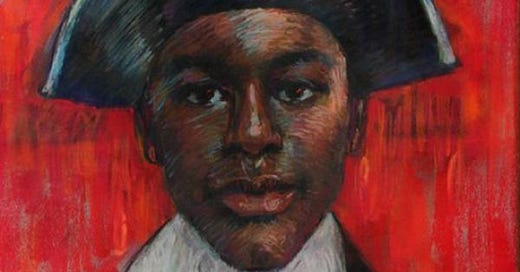Issue #515 Today In Black History, Tuesday, February 27, 2024
Today’s Black History WOW!
Peter Salem was born into slavery in 1750 in Framingham, Massachusetts. In early 1775, Salem was sold to Lawson Buckminster. When Buckminster was appointed to Major in the Continental Army, he emancipated Salem so that Salem could enlist in the patriot militia and serve as a minuteman. During the Revolutionary War, Salem fought alongside other Black Minutemen, including Titus Coburn, Salem Poor, and Seymour Burr. He fought during the opening engagements of the war at the Battle of Lexington and Concord.
During the Battle of Bunker Hill, he was credited with mortally wounding British Major John Pitcairn with a shot through the chest.
On January 1, 1776, Salem reenlisted with the 4th Continental Regiment for one more year. He took part in the New York Campaign and served at the Battles of Harlem Heights and Trenton under General Nathanael Greene. On January 1, 1777, Salem reenlisted for a three-year term where he fought at the Battle of Saratoga, Monmouth, and Stony Point. He was honorably discharged in 1779. However, he reenlisted under Colonel Nixon and served again from January 1 to March 1, 1780.
Following the Revolution, Salem moved to Salem, Massachusetts, and married Katy Benson in September 1783. However, they struggled financially.
On August 16, 1816, Peter Salem died in a poorhouse, a government-run facility for the needy or dependent, in Framingham, Massachusetts, at the age of 66. He was buried in a pauper’s grave at the Old Burying Ground in his birthplace of Framingham, Massachusetts.
The moment that Salem shot Pitcairn is immortalized in John Trumbull’s famous painting of the Battle of Bunker Hill, which hangs in the Museum of Fine Arts in Boston, Massachusetts.
In 1882, the townspeople of Framingham erected a monument for him to honor his service in the Revolutionary War.
In 1909, the Daughters of the American Revolution made Salem’s home in Leicester a historical monument. Salem is considered a Revolutionary War hero for his service.
In 2020, a statue of Peter Salem was unveiled in Framingham, Massachusetts, honoring his contributions to the war and the fight for freedom. Salem's story serves as a reminder of the sacrifices made by African Americans throughout history.
Today In Black History
- In 1801, the District of Columbia was placed under Congressional jurisdiction.
- In 1869, John W. Menard became the first Black person to speak in Congress; he spoke in defense of his claim to a contested seat in Louisiana’s Second Congressional District. The Congress decided against him, and Congressman and future President James A. Garfield declared that it was “too early to admit a Negro to the U.S. Congress.”
- In 1869, Congress adopted the 15th Amendment which it illegal to deny or abridge the right to vote “on account of race, color, or previous condition of servitude.”
- In 1872, Charlotte E. Ray, the first Black female lawyer, graduated from Howard University.
- In 1883, Black inventor Walter B. Purvis patented the hand stamp.
- In 1884, the Dominican Republic gained its independence from Haiti.
- In 1988, figure skater Debi Thomas became the first African American to win a medal (bronze) at the Winter Olympic Games.
The “Comments” feature has been disabled. Instead, let’s discuss these facts in our community on Substack Notes. You can also read other Substack publications without subscribing to them when you join Notes.
This post is free to read/listen to for three days after publication. To have 365 24/7 access to all our posts and podcast episodes and financially support “We Are Speaking” for no more than $5 per month, please subscribe at the paid level. You will receive a 7-day FREE trial!






